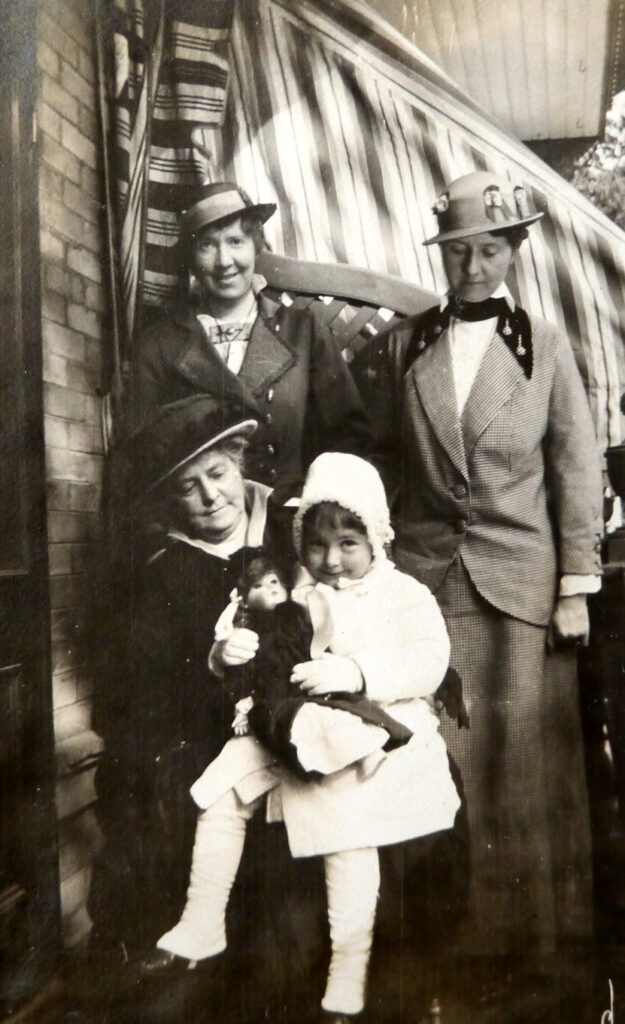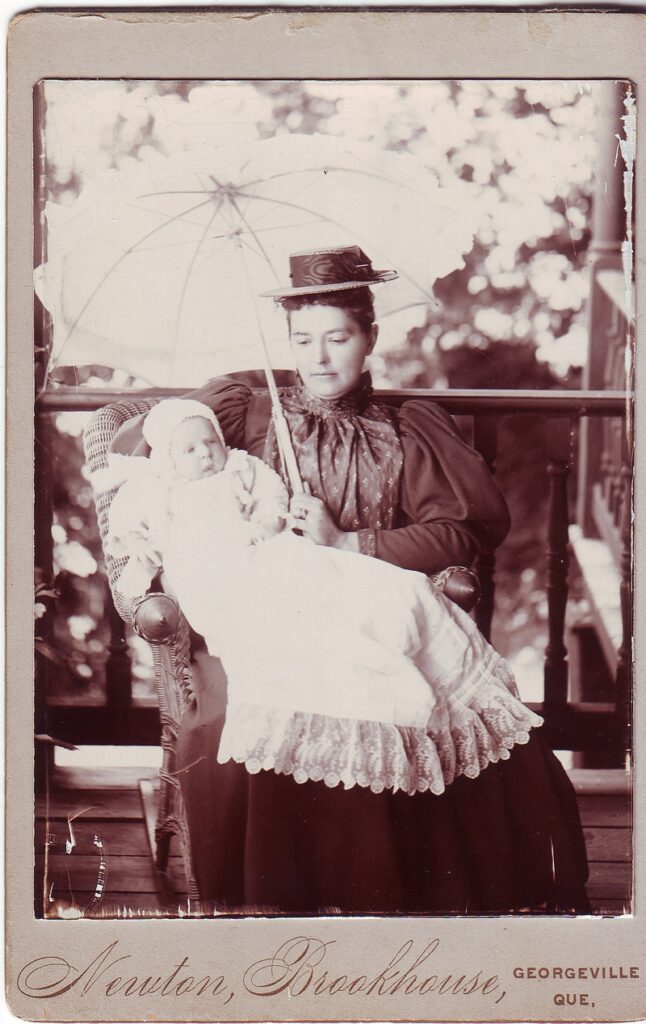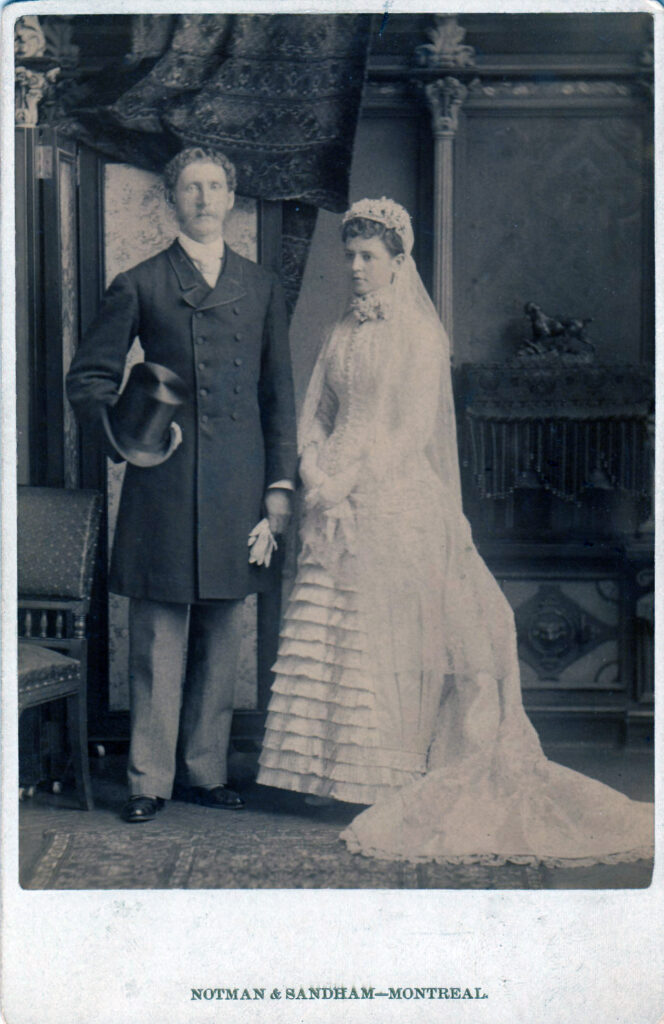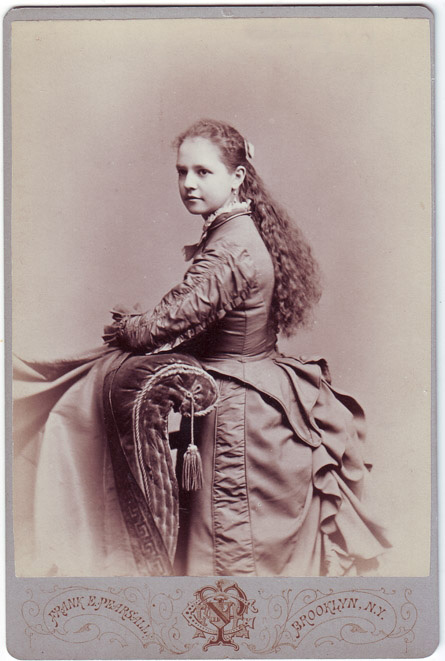
I have heard two stories about my great-grandmother, Clara Smithers, otherwise known as Mrs. R. Stanley Bagg. One story described her as shocking her friends by pushing a baby carriage down the street herself, rather than having the nanny do it.
My mother told me the other story: when my mother was a little girl, Grandmother Bagg was very strict about making her clean all the dirt off her shoes before she got into her grandmother’s car.
A 1930 collection of short biographies of prominent Canadian women said Mrs. Bagg occupied “a leading place in local hospital and charitable work.” She was a governor of the Montreal General Hospital and the Children’s Memorial Hospital, and she volunteered for the Ladies’ Benevolent Society and the Day Nursery. According to her obituary, she was also active in St. James the Apostle Church, an Anglican church located near her downtown Montreal home.
In addition, she was a member the Imperial Order of the Daughters of the Empire (IODE), a federation of women founded in 1900 to promote patriotism, loyalty and service to others, and of the Art Association, Themis Club, Royal Montreal Golf Club and Montreal Hunt Club.
Clara was born in Montreal in 1860 to Charles Francis Smithers, an English-born banker, and Martha Bagnall Shearman, his Irish-born wife. The family lived in Brooklyn for many years while Clara was growing up, and returned to Montreal in 1879. Two years later, her father became president of the Bank of Montreal.
Clara married lawyer and businessman Robert Stanley Bagg in 1882, when she was 22 and Stanley was 34, and they had two daughters and a son: Evelyn, Gwen and Harold.

The Baggs were members of an elite group of English-speaking Protestant Montrealers whose values were those of the British Empire: good manners, duty, family, love of God, hard work. Their unquestioned role was to lead, and to preserve the status quo.
Clara would have been expected to respect her husband’s authority, to oversee the household servants, and to follow the rules of etiquette. She joined the previously mentioned organizations in order to meet her obligations of noblesse oblige, to socialize with the right people, and probably to keep from being bored.
There were some difficult times. Surviving family letters suggest that Stanley found his work very stressful, and that he was in poor health for some years. He died of cancer in 1912, while the family was on holiday in Kennebunkport, Maine. Presumably they had hoped the sea air would be good for him. A few months later, 17-year-old Harold was driving his mother’s car when he accidentally hit a child, killing him. In 1939, Harold’s 34-year-old wife, the former Katherine Louise Morse, of New York, died. Harold died in 1944, age 49.
Clara lived in the Bagg family home at the corner of Sherbrooke Street and Côte des Neiges Road for more than 50 years. She did not remarry. Both her grown daughters, each of whom had one daughter, lived a few blocks away, but I do not know whether they were close emotionally.
She died in 1946, at age 85, after a long illness. My mother said her grandmother was “completely batty” by the end of her life. I assume that meant she had dementia.
Photo credit: Courtesy McCord Museum; Bagg family collection
Research remarks:The Social and Personal Column of The Gazette is amazingly informative about this generation of the Bagg family and their friends. The column often noted when they had house guests or went on trips, and the newspaper printed long lists of the guests at weddings and debutante balls. Clara’s obituary is at http://news.google.com/newspapers?id=QX4tAAAAIBAJ&sjid=85gFAAAAIBAJ&pg=4254,4063099&dq=bagg+montreal&hl=en. As of 2022, numerous articles about the family from The Gazette and The Montreal Star can also be found through Newspapers.com.
Westley, Margaret W. Remembrance of Grandeur: the Anglo-Protestant Elite of Montreal, 1900-1950. Montreal: Éditions Libre Expression, 1990. Based on interviews with people who grew up in this milieu, this book paints a fascinating picture of the world in which Clara lived.
Several turn-of-the-century family letters and legal documents, including a reference to Harold’s accident, can be found in the Bagg, Abner and Stanley fonds (P070) at the McCord Museum in Montreal.
The biography of Mrs. R. Stanley Bagg is in a vanity publication, Women of Canada. Montreal, QC: Women of Canada, 1930. I have only the one page.


